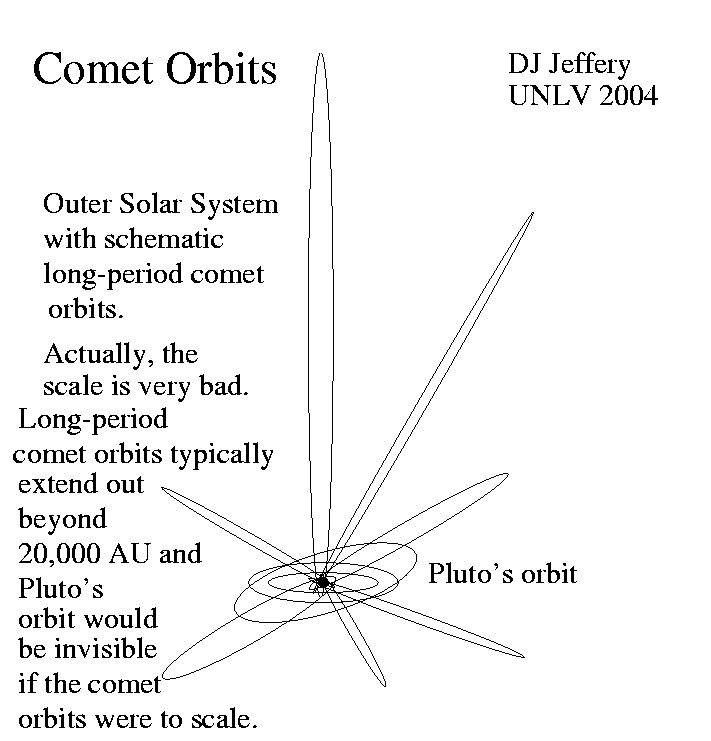
Caption: A cartoon of the orbits of comets. The orbits are all highly elliptical orbits.
Features:
- Short-period comets
have orbital periods less than
200
years and have
orbital planes
somewhat concentrated near the ecliptic plane.
It is thought that
short-period comets originate as
Kuiper Belt objects (KBOs)
that astronomical perturbations
perturb into highly elliptical orbits.
- Long-period comets
have orbital periods ranging from
200
years
to thousands
of years and
their orbital planes
have a
spherically symmetric
distribution.
It is thought that
long-period comets originate as
Oort Cloud objects (OCOs)
that astronomical perturbations
perturb into highly elliptical orbits.
- The Oort cloud is a hypothetical
spherically symmetric
population of rocky-icy bodies
extending from perhaps from
2000
AU
to 200,000 AU from the
Sun
(see Wikipedia:
Oort cloud: Structure and composition).
No OCO has ever been detected since
they are very hard to detect: they are very dim, tiny, slow-moving far-off
astronomical objects.
- The Oort cloud
must exist to resupply long-period comets
which can't live forever.
A long-period comet
evaporates all its
ices
after a few passes close to the
Sun
(i.e., a few perihelions) and
eventually impacts
some other
Solar System
astro-body
or, via a gravitational assist,
is launched back into an orbit entirely
beyond the Neptune orbit
or ejected from the Solar System
on an escape trajectory
(AKA escape orbit):
i.e.,
a parabolic trajectory
or hyperbolic trajectory.
Image link: Itself.
Local file: local link: comet_orbits.html.
File: Comet file: comet_orbits.html.